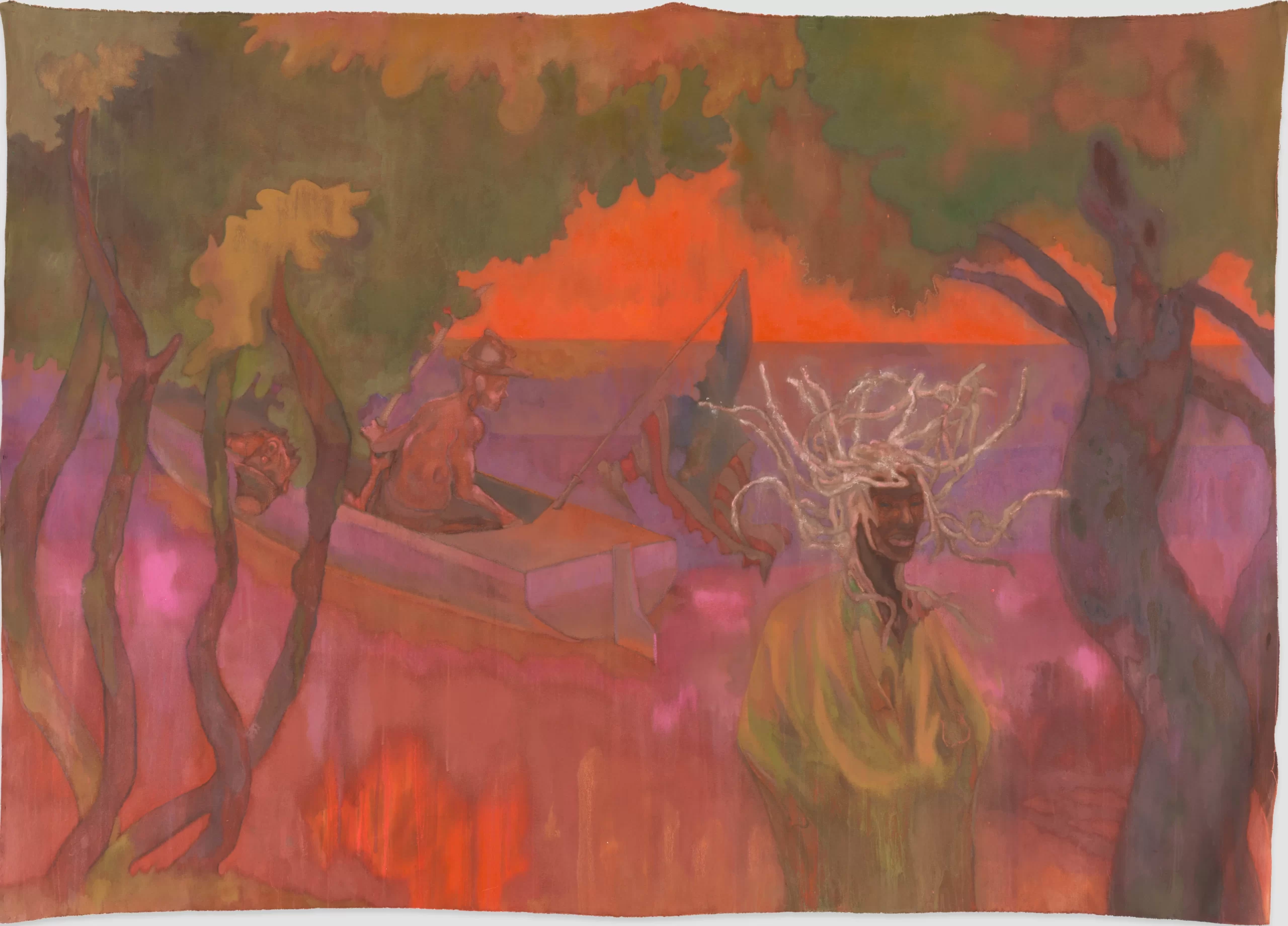The World of Interiors
In the Black Fantastic


In his 2013 book Afrofuturism: the World of Black Sci-Fi Fantasy and Fantasy Culture, filmmaker and author Ytasha L. Womack writes about the need to ‘put a cosmic foot down’ in terms of reimagining the role and visibility of people of non-European descent. A mainstream example is the 2018 sci-fi superhero film Black Panther which imagined an African country untouched by European colonialism. But it’s not an isolated example. There’s a long tradition of ‘looking forward’ in the work of artists, writers, architects, musicians and filmmakers of African descent. The author Octavia Butler, musician George Clinton and artist Jean-Michel Basquiat, for instance, all explored African diaspora protagonists and communities in various manifestations of speculative, fantastical and alternative realities. British curator Ekow Eshun seeks to build upon these existing legacies with a new exhibition ‘In the Black Fantastic’, which will focus on the creation of new worlds while also contemplating racism, social injustice, African mythology and spiritual traditions.
The show will include painting, photography, sculpture, installations and mixed-media works by 11 international artists – Nick Cave, Sedrick Chisom, Ellen Gallagher, Hew Locke, Wangechi Mutu, Rashaad Newsome, Chris Ofili, Tabita Rezaire, Cauleen Smith, Lina Iris Viktor and Kara Walker. Together, they will explore Ekow’s ambitious vision of creating an immersive environment. No two narratives will be alike, but none of these artists are strangers to the concept of the fantastical. US sculptor Cave makes whimsical ‘soundsuits’ that critique racial injustice while Franco-Guyano-Danish Rezaire’s video-heavy practice marries African philosophy and cosmology with technology and science. British sculptor Locke’s dramatic installations recontextualise and embellish archaic aristocratic figures while Netherlands-based painter Ellen Gallagher’s tender watercolours employ mythology to envisage a different ending for the slave trade’s Middle Passage. Each artist has, in their own way, played with time, physics and the unknown in order to unearth new knowledge, truths and identities. Their heritages, practices and aesthetics differ, but they come together with the joint goal of Black liberation.
The show will arrive right on time. This year’s US Black History month saw new conversations arise about the need to focus on the making of history, rather than simply observing it. Artistic expression appears to be at the centre of this change – with organizers from the Black Lives Matter movement seeking to establish a ‘Black Futures Month’, which would entail 29 days spent creatively envisioning individual and collective evolution. This too, appears to be the goal of ‘In the Black Fantastic’; to provide fertile ground for new ways of imagining. Another belief underpinning the show is the idea that Black people’s historical erasure shouldn’t mean they have to humble themselves – they have the right to play god as much as anyone else. Eshun said it best in an interview about the pictures he archives on an Instagram account dedicated to Afrofuturism: ‘They reveal a desire to make the world over, to create imagery more fantastic, music more resonant, buildings more audacious, than ever previously witnessed.’